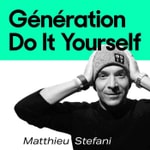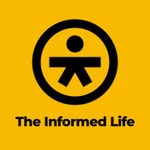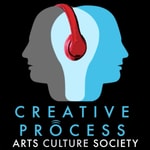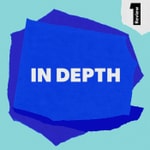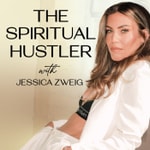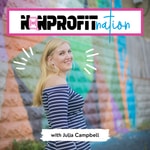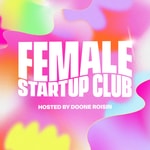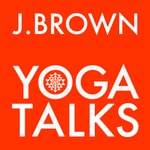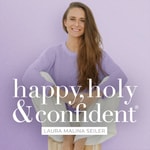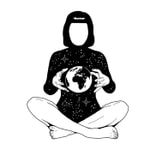Social Entrepreneur – Details, episodes & analysis
Podcast details
Technical and general information from the podcast's RSS feed.
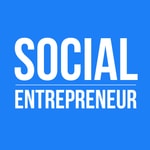
Social Entrepreneur
Tony Loyd
Frequency: 1 episode/7d. Total Eps: 328

Social Entrepreneur exists at the intersection of profit and purpose. We tell positive stories from underrepresented voices, focused on solutions.
Recent rankings
Latest chart positions across Apple Podcasts and Spotify rankings.
Apple Podcasts
🇨🇦 Canada - careers
17/11/2024#82
Spotify
No recent rankings available
Shared links between episodes and podcasts
Links found in episode descriptions and other podcasts that share them.
See all- https://www.upwork.com/
1853 shares
- https://www.hashtagimpact.com
183 shares
- http://tonyloyd.com/books
94 shares
- https://twitter.com/lkr
18 shares
- https://twitter.com/RogerLMartin
14 shares
- https://twitter.com/twinmiki
8 shares
RSS feed quality and score
Technical evaluation of the podcast's RSS feed quality and structure.
See allScore global : 43%
Publication history
Monthly episode publishing history over the past years.
An Umbrella Made from Ocean-Bound Plastic, with Deirdre Horan, Dri
Season 4 · Episode 325
mercredi 18 mai 2022 • Duration 21:13
(For show notes and a full transcript, see https://tonyloyd.com/deirdre-horan).
Dri produces durable, fashionable, and environmentally sustainable umbrellas from ocean-bound plastic.
As a fifteen year-old, Deirdre Horan left her comfortable home in Acton, Massachusetts to join a youth group traveling to Gulfport, Mississippi. This was two years after Hurricane Katrina, and the community continued to struggle.
“What really struck me was the level of devastation that was still there two years later,” Deirdre explains. “It takes much longer than the initial relief to pick lives back up. People will always need assistance if they’ve been impacted. I saw at a young age that something can always be done for somebody.”
Deirdre continued to travel back to Gulfport year after year. But she also thought of how she could make a greater impact.
A shift in plans
In 2017, Deirdre watched a documentary, Garbage Island: An Ocean Full of Plastic. In the film, Captain Charles Moore made a comment that stuck with her. “He said something like, ‘The oceans to a degree help clean itself out. We need to address the amount that’s flowing in,’” Dierdre explains.
“I went down a black hole, researching recycling. I learned that plastic bottles could be upcycled into polyester.
“One day I was walking to work and my umbrella flipped inside out. I was wet, discouraged, and angry. I threw the umbrella in the trash can. I checked the tag. It was made with polyester yarn. The wheels started turning. I realized that I didn’t know who made any umbrella, let alone an eco-friendly umbrella.”
That’s when the idea came for an umbrella made from ocean-bound plastic.
“I ran around telling everybody I knew about this idea. And then, I realized that I had to buckle down and do some research. One of the biggest hurdles was finding someone who could make it ethically.
“I vetted multiple companies before I made my decision.”
The problem
The world produces 380 million tons of plastic every year. Much of that is for single-use.
But what about recycling? Much of the plastic that is gathered for recycling is sent to countries with weak environmental laws and poor waste management systems. According to Deirdre Horan of Dri, over 17 billion pounds of plastic flows into the ocean every year. That’s more than one garbage truck per minute.
In many of these low-income countries, waste pickers will pick up ocean-bound plastic and bring it to recycling centers. That plastic is pelletized and can be spun into yarn and polyester.
The solution
Dri umbrellas are created from upcycled ocean-bound plastic. The handles are made from fast-growing bamboo, and the shafts are stainless steel, which is recyclable.
Learn More About Deirdre Horan and Dri
Dri: https://dri.earth
Dri on Instagram: https://www.instagram.com/dri_umbrellas
Dri on Twitter: https://twitter.com/DriUmbrellas
Vice Documentary, Garbage Island: An Ocean Full of Plastic: https://youtu.be/D41rO7mL6zM
IFundWomen: https://ifundwomen.com
First Founders: https://firstfounders.org
Grants, Challenges, and Incubators (Oh My!) with Shubham Issar of SoaPen
Season 4 · Episode 324
vendredi 11 mars 2022 • Duration 47:14
For a full transcript and extended show notes, see https://tonyloyd.com/shubham-issar.
Shubham Issar and Amanat Anand go from the UNICEF Wearables for Good Challenge to Shark Tank and beyond.
Shubham Issar and Amanat Anand grew up in New Delhi but met at Parsons School of Design in New York. They loved working together on hands-on design projects that made a difference. In 2015, they entered the UNICEF Wearables for Good Challenge. While investigating the challenge, they ran into a statistic that shocked them. Hundreds of thousands of children under the age of five die annually from infectious diseases that handwashing can prevent. Shubham and Amanat were determined to do something about that.
They returned to India to see handwashing in action. They sat in classrooms and observed. They discovered that teachers, overwhelmed by a student ratio of sixty-to-one, were rationing soap. Proper handwashing was not happening at critical times during the day.
They also observed the children enjoying their favorite pastime, drawing with bright colors.
Shubham and Amanat had an idea to make handwashing fun. They developed a prototype of a soap pen. Kids draw on their hands with brightly colored soap. It takes 20 to 40 seconds to wash off the design, ensuring proper handwashing.
UNICEF selected their design as one of ten winners of the Wearables for Good Challenge. And so, SoaPen, the product, and the company were born.
With the prize money, Shubham and Amanat conducted research and development. In 2017, they conducted a Kickstarter campaign to fund a production run. In 2018, they launched their first product on Amazon, but they struggled with sales.
"Talking about 2019 itself, it was just such a hard year for us," Shubham says. "We were bootstrapped. We launched on Amazon because we wanted to be where the parents were. But when you launch on Amazon, you're this little fish in this massive pond. You don't know how to reach the right audience.
"In October of 2019, we were featured in Real Simple magazine. Being the millennial I am, I had no idea the power that print media had. We completely sold out our entire inventory in two and a half weeks."
SoaPen's supply chain was not ready. Amazon's algorithm sent people to their page, but SoaPen could not meet the demand. Their supplier took more than eight weeks to produce new SoaPens. When the SoaPen products returned in stock, the wholesale channel took 70% of that order. So SoaPen remained out of stock on Amazon.
"On Amazon, if you're inactive for two weeks, you're essentially starting from scratch. I think that was very stressful. We finally felt like we had market validation, that the parents were interested in the product and that it was filling a need."
That was January 2020. Then, COVID hit, and they sold out again.
During this time, SoaPen received crucial customer feedback. Parents wanted more vibrant colors. And, they wanted a smaller roller ball for better drawing. When it seemed like SoaPen should rush into production, they decided to pause to get the product right.
With a redesign and supply chain issues, they took time to get the product back on shelves. They missed sales opportunities, but they developed a product that kids and their parents love.
Eliminate Plastic from Your Oral Care, with Kathy Ku, Juni Essentials
Season 3 · Episode 315
jeudi 25 février 2021 • Duration 22:56
Helping bamboo farmers and women in impoverished regions become self-reliant while eliminating plastic waste.
If Kathy Ku’s name is familiar to you, you might have heard about her previous social venture in Uganda, Spouts of Water. I interviewed Kathy in December 2016. Kathy and her co-founder John Kye left Spouts of Water, but it continues to thrive.
Around the same time that Kathy and John were in Uganda working on clean water, Dr. Noah Park was volunteering in low-income countries.
“One of our Korean co-founders visited our production site in Uganda seven years ago or so, but we had never met each other,” Kathy explains.
“He traveled to the less developed areas of developing countries and noted that a lot of bamboo was being grown in these areas and wanted to do something about it. He calculated by developing the bamboo industry in Vietnam, he could triple or quadruple the average yearly earnings in an area with 150,000 inhabitants. He’s also a dentist, so he naturally came upon bamboo toothbrushes.”
In the United States alone, over 1 billion plastic toothbrushes are thrown away each year. These toothbrushes are not recycled. They end up in the landfill or floating in the environment.
To deal with these two problems – plastic waste and helping poor bamboo farmers, Dr. Park launched his bamboo toothbrush company in Korea under the Dr. Noah brand. In 2020, Dr. Noah raised Series A capital to move into the US market. That is when Kathy Ku and John Kye joined the team.
About Kathy Ku
“I grew up in an immigrant family and community that always stressed this idea of giving back,” Kathy says. “My mom would tell me, ‘you should run an orphanage when you grow up.’ Now, I look back and think we definitely should have been worrying about our roof over our heads. But this idea of looking to do good and doing well always stuck with me.
“By the time I joined Juni Essentials, they were still trying to figure out the production process. We’re talking like 50 toothbrushes being made a day. I had a manufacturing background and helped ramp it up. We’re now making more than 50,000 toothbrushes a month. We’ll get to 100,000 soon.
“Not a lot of people know about bamboo toothbrushes, and of the people who’ve tried them, I think a lot of people have been turned off by them. They feel different from plastic toothbrushes. And I think this is where we come in.
“Our product is fundamentally made differently from other products out there. That’s why we chose to make it ourselves. Our surface is heat-treated using patented technology that provides this smooth surface - the toothbrushing experience is comparable to that of plastic toothbrushes, so why not switch?
“I think I generally have good intentions, but the execution has been difficult. For example, I want to be good to the environment, and my husband and I compost and try to use compostable Ziploc bags. But I still drive my high school car, a Cadillac, which probably contributes to 50% of California’s carbon emissions. I think bamboo toothbrushes make me happy because it’s an active decision I make every morning and evening when I brush my teeth.”
Learn More About Kathy Ku, Juni Essentials:
- Juni Essentials: https://juniessentials.com
- Juni Essentials on Instagram: https://www.instagram.com/juniessentials
- Juni Essentials on Facebook: https://www.facebook.com/juniessentials
- Kathy Ku on LinkedIn: https://www.linkedin.com/in/seulkathyku
- Kathy’s 2016 interview about Spouts of Water: https://tonyloyd.com/podcast/143-kathy-ku-and-john-kye-spouts-of-water-safe-drinking-water-for-all-ugandans/
From #MeToo to #HeForShe, with Julie Kratz, Pivot Point
Episode 227
lundi 1 janvier 2018 • Duration 26:18
Create a Better World through…Paperwork? Rachel Armstrong, Farm Commons
Episode 226
lundi 1 janvier 2018 • Duration 24:04
Community Feasts for a Cause, with Emily Torgrimson, Eat for Equity
Episode 225
lundi 18 décembre 2017 • Duration 24:20
Eat for Equity is building a culture of generosity through sustainable community feasts.
In the early 2000s, Emily Torgrimson was a college student on financial aid. She lived in a cooperative house in Boston with 24 people. “We always came together around food,” she recalls. “The kitchen was the hub of the home.”
During Emily’s senior year, Hurricane Katrina struck the southern US coast. Not only was Katrina one of the costliest and deadliest storms in US history, it also uncovered financial and racial inequities. Emily wanted to do something, but, she says, “I had no money to give. So, I wondered what kind of difference I could make.”
Because it was Emily’s turn to cook in her cooperative house, she was looking at recipes, when she stumbled across a recipe for jambalaya. This gave her an idea. She asked her housemates, “If I made a New Orleans themed meal, do you think people would throw in a buck or two for hurricane relief?” Her housemates agreed. They handed out fliers. They invited friends and classmates. In the end, one-hundred people showed up, ate Cajun food and raised money for hurricane relief. They called the event “Eat for Equity.” Eat for Equity eventually became Emily’s life’s work.
After returning to Minnesota, Emily began to host Eat for Equity meals with her roommate in their small home. After about a year of monthly meals, a friend, Jane, hosted an Eat for Equity meal. People who knew Jane showed up for the meal. Then Eat for Equity began to grow to more homes, more social causes, and more people who were willing to experience something new.
How does Eat for Equity Work? You walk in to a home, an art gallery or a farm. Volunteers have prepared a feast with from-scratch cooking, utilizing local produce. You give what you can. That might be $10 or $50. You might not have money, but you can volunteer to help with dishes or provide music. The meal supports a nonprofit cause.
Eat for Equity also hosts dinners called “The Welcome Table,” which is focused on immigrants and refugees. Four cooks are featured in each dinner. Each course reflects their family heritage.
Social Entrepreneurship Quotes from Emily Torgrimson
“You walk into abundance.”
“How do you use food to bring people together to support a great cause, to address inequities around us?”
“I think of Eat for Equity as trying to create connections.”
“There are all these ways you can give that feed you and also create something bigger around you.”
“You can be generous with what you have.”
“You share a piece of yourself when you cook for people.”
“I wanted to be part of the story, as much as I wanted to tell it.”
“I fell in love with Minneapolis and the culture of collaboration.”
“Catering has basically doubled every year.”
“Just try something and see how it feels.”
“Everything happens around food.”
Social Entrepreneurship Resources:
- Eat for Equity: https://eatforequity.org
- Eat for Equity on Facebook:https://www.facebook.com/EatForEquity
- Eat for Equity on Instagram: https://www.instagram.com/eatforequity
- Eat for Equity on Twitter: https://twitter.com/eatforequity
- Book: Crazy Good Advice: 10 Lessons Learned from 150 Leading Social Entrepreneurs: https://tonyloyd.com/book
Fair Trade Coffee from Smallholder Farmers, with Lee Wallace, Peace Coffee [ENCORE]
Episode 224
lundi 18 décembre 2017 • Duration 24:17
NOTE: This is an encore presentation of an episode that first aired on July 11, 2016. Advice from Lee Wallace is featured in the book, Crazy Good Advice: 10 Lessons Learned from 150 Leading Social Entrepreneurs. To hear the original, extended interview, go here: https://tonyloyd.com/096.
Smallholder farmers grow more than half of the coffee consumed worldwide.
Imagine if you will, that you are working at a non-profit in Minnesota, focusing on public policy. The phone rings, and the person on the other end says “Hello. This is the Port of Los Angeles. We have 38,000 pounds of green coffee with your name on it. How would you like to pick this up?” You know nothing about coffee or roasting or retail. What would you do?
That is exactly what happened twenty years ago at the Institute for Agriculture and Trade Policy. In today’s Social Entrepreneur, Lee Wallace, the Queen Bean of Peace Coffee tells us the rest of the story.
Peace Coffee is a for-profit social enterprise, owned by a nonprofit, the Institute for Agriculture and Trade Policy. Peace Coffee has a wholesale business that they have been running for about two decades. They also have four retail coffee shops within the Twin Cities, Minnesota.
Last year Peace Coffee purchased 735,000 lbs. of coffee from 12 countries and 20 smallholder farmer cooperatives. In the process, Peace Coffee paid $370,000 in fair trade premiums.
Social Entrepreneurship Quotes from Lee Wallace
“We think hard about how to do the right thing for coffee farmers.”
“Our customers named us.”
“I was trying to find a career that made sense to me in terms of my passions.”
“What I was trying to do was find places that sit at the nexus of mission and money.”
“Pretty quickly I realized that this is a magical place for me.”
“I have always been interested in how organizations work.”
“We spend a lot of our time at work.”
“The Twin Cities is an amazing place to learn about natural foods because we have such a vibrant and thriving co-op ecosystem.”
“My dad really wanted us to understand the history of industry as it came in and out of communities and how that really impacted families in those communities.”
“The original idea was that we would be an importer of all kinds of things.”
“More than 50% of the world’s coffee farmers, farm coffee on very small parcels of land.”
“We come this work with the sense that, what we’re doing is working on trying to elevate the livelihood of an awful lot of people who historically have been very disadvantaged when it comes to the way trade works.”
“It’s livelihood, but its community development too.”
“Co-ops are stepping in and playing the role of civil society in these communities.”
“People in these communities have ideas and know how they’re going to make their communities better. Our job is to be a good partner on the other side of that.”
“We have a price floor…We believe that below this level is unsustainable for coffee farmers.”
“This company existing 10 years from now is more important than what is happening this month. This company is bigger than all of us.”
“You’d be amazed at who would be willing to talk to you.”
Social Entrepreneurship Resources:
- Peace Coffee: https://www.peacecoffee.com/
- Peace Coffee on Facebook: https://www.facebook.com/Peace-Coffee-26583664405/
- Peace Coffee on Instagram: https://www.instagram.com/peace_coffee/
- Peace Coffee on Twitter: https://twitter.com/Peace_Coffee
- Institute for Agriculture and Trade Policy: http://www.iatp.org/
- Book: Crazy Good Advice: 10 Lessons Learned from 150 Leading Social Entrepreneurs: https://tonyloyd.com/book
Kate Goodall Explains Why Halcyon is Like the X-Men
Episode 223
lundi 11 décembre 2017 • Duration 22:57
A Social Enterprise with a Radio Show at its Heart, with Krista Tippett, OnBeing [ENCORE]
Episode 222
lundi 11 décembre 2017 • Duration 24:10
Educational Opportunities for All, with Maimuna Ahmad, Teach for Bangladesh
Episode 221
lundi 4 décembre 2017 • Duration 24:51
